Photo: Joe Robbins/Icon Sportswire
Mookie Betts and Alex Verdugo headlined the big trade between the Red Sox and Dodgers early in 2020, but in 2023, Connor Wong has emerged as a huge part of that deal. The 27-year old backstop has assumed the starting role in Boston and is a big reason why the Sox are hanging around the wild card race. Wong’s 1.8 bWAR ranks tied for 8th among all catchers
Wong is having a very solid year with the bat, hitting .249 with a .715 OPS, along with six home runs and 19 doubles. But what vaults him into that group of catchers above is his defense. He’s tied for 10th among catchers with 6 Defensive Runs Saved.
He’s done this despite posting -5 Runs Saved in our pitch-framing stat, Strike Zone Runs Saved. What’s saved Wong is two things.
For one, SIS has a stat, Adjusted Earned Runs Saved, that serves as a substitute for what we call “staff handling.” He’s at 5 Runs Saved in that area, largely because the ERA when he catches is 3.81, compared to backup Reese McGuire’s 5.42.
The other is the one we’ll focus on here: His 5 Runs Saved for basestealing deterrence are tied with Gabriel Moreno for the MLB lead.
Wong’s 82.7 MPH average on his throws ranks 7th in MLB per Statcast. But his skill is about more than that.
POP TIME
The first thing we can point to is his pop times to second base (we’ve hand-timed pop times for several years). He is among the league’s best in that regard, tied with Sean Murphy for the third-lowest at 1.849 seconds. The MLB average is 1.924 seconds. The slowest pop time that we have recorded for Wong this season is 1.909. So, his slowest is still better than the league average. The ball is getting from Wong’s glove to the fielder on the receiving end’s glove extremely quickly and efficiently. You’ll see some examples of this in a second.
ACCURACY
The next area in which Wong does what he needs to do is accuracy. He isn’t just getting the ball to second base quickly, he has also been precise with his throws, giving the second baseman or shortstop easy chances at catching and tagging.
At SIS, we assign a “Catch Difficulty” for the fielder receiving the throw on each stolen base attempt. It is a 1-5 scale, with 1 being “Routine” and 5 being “Impossible.” Wong’s throws to second base this year average out to a 1.7 difficulty, which is right around the league average of 1.8. He’s giving his infielders a reasonable chance to make a tag.
We also have a “Expected Time to Tag” metric, which estimates the average time that it takes for an infielder to apply a tag after receiving a throw. On Wong’s throws to second base, his average Expected Time to Tag is 0.219 seconds, which, again, is right around the league average of 0.224 seconds in a sport where tenths and hundredths of seconds make a big difference.
This combination of good quickness and average accuracy, paired with his arm strength has allowed Wong to throw out 15 runners at second base in 47 attempts (32%) in a year where the average caught stealing rate at second is 21%.
But I think you can get a fuller appreciation of Wong by watching him in action when he’s at his best.
VIDEO ANALYSIS
The first throw we’ll look at illustrates how easy Wong makes it on his infielders to get a tag down quickly and efficiently:
Connor Wong has a cannon. 🎯 pic.twitter.com/G714kdT9nY
— Red Sox (@RedSox) June 9, 2023
Everything Wong does here is efficient. His feet move into a great position to throw, squaring up to second base, almost instantly. His glove hand also stays compact and close to his body as he transfers the ball to his throwing hand. His glove barely moves from the time he catches the ball to the time the ball reaches his throwing hand:
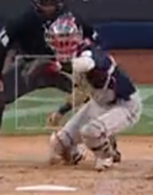
Being in such a perfect position to throw allows Wong to be spot-on with his accuracy. This is a good example of Wong’s strong Expected Time to Tag as the time it takes Kike Hernandez to tag the runner after he catches the ball is almost non-existent. It’s almost as if the velocity from the throw takes Hernandez’ glove right into the leg of Isaiah Kiner-Falefa.
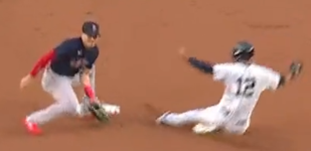
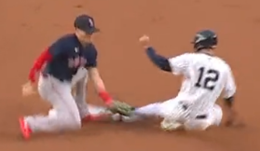
Of course, this pitch was a relatively easy ball for Wong to handle, which helped his efficiency in transferring the ball to his hand and getting a great throw off. But Wong has also been able to nab runners at second despite a less-than-ideal offering from his pitcher:
https://twitter.com/peskyreport/status/1655272961920606209?s=46&t=kyOywkZWm9MHJ-tojzBVvA
Wong is set up inside here, but the pitch is pulled almost to the left-handers batters box. Even with that, Wong is able to almost immediately get into the same throwing position as he was in the previous play we looked at:
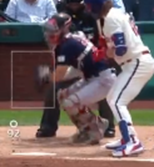
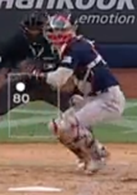
Wong’s starting position also plays a factor into how quickly he gets into a good throwing position. Instead of starting in a normal catching stance with his feet parallel to each other, his right foot starts slightly behind his left, with one knee on the ground:
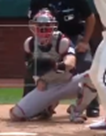
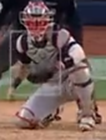
When a catcher makes a throw to second base, his right foot is obviously going to need to end up behind his left. Wong starting like this just simply allows less time for that to happen.
Wong’s great arm is not limited to just throwing out would-be-base stealers. He has also impacted games with his arm by nabbing runners at second and third base after base hits against the Braves and the Athletics.
There may have been some concerns last season about the future Red Sox catching situation when they traded longtime starter Christian Vázquez to the Astros. But Wong has alleviated those concerns thanks to strong play, particularly behind the plate.
